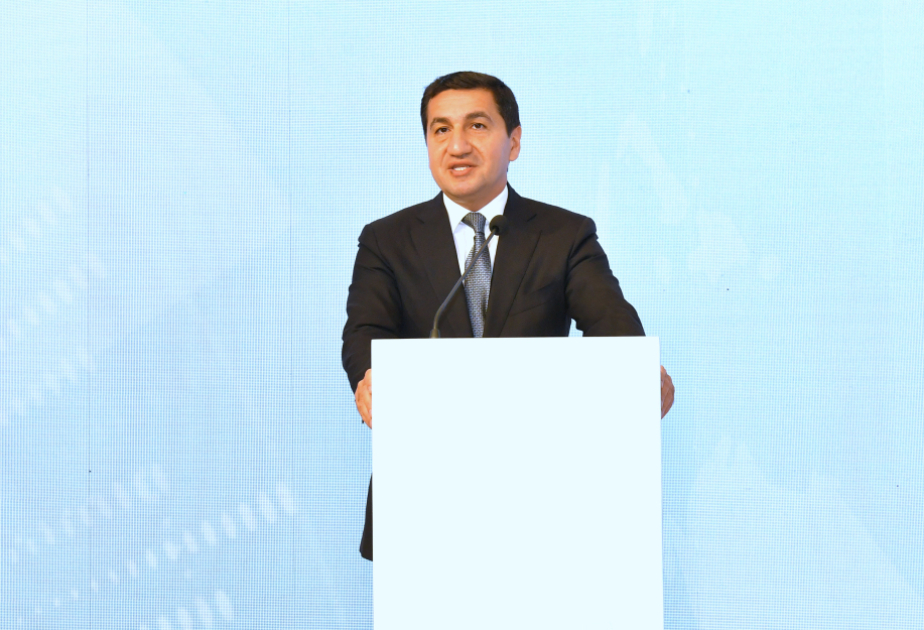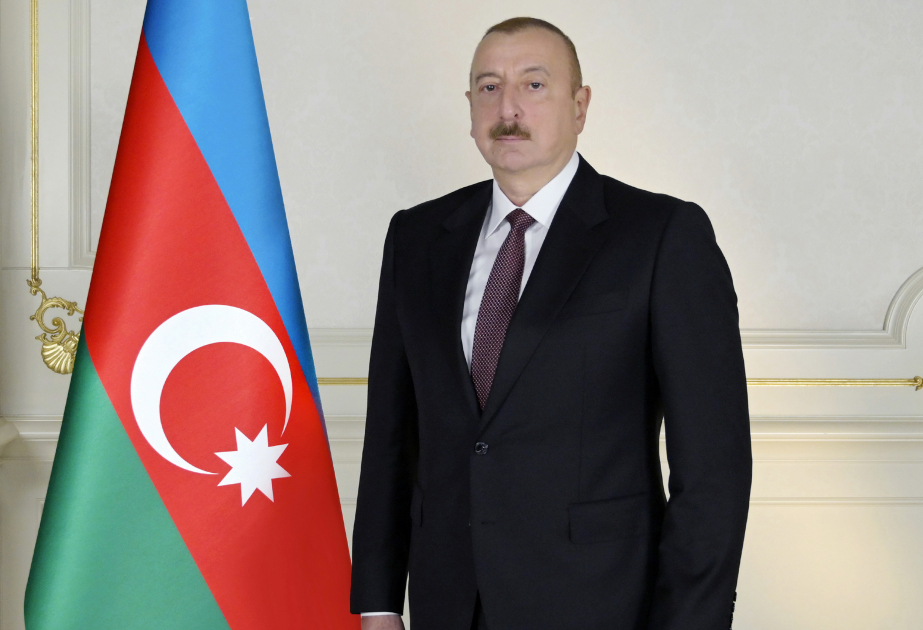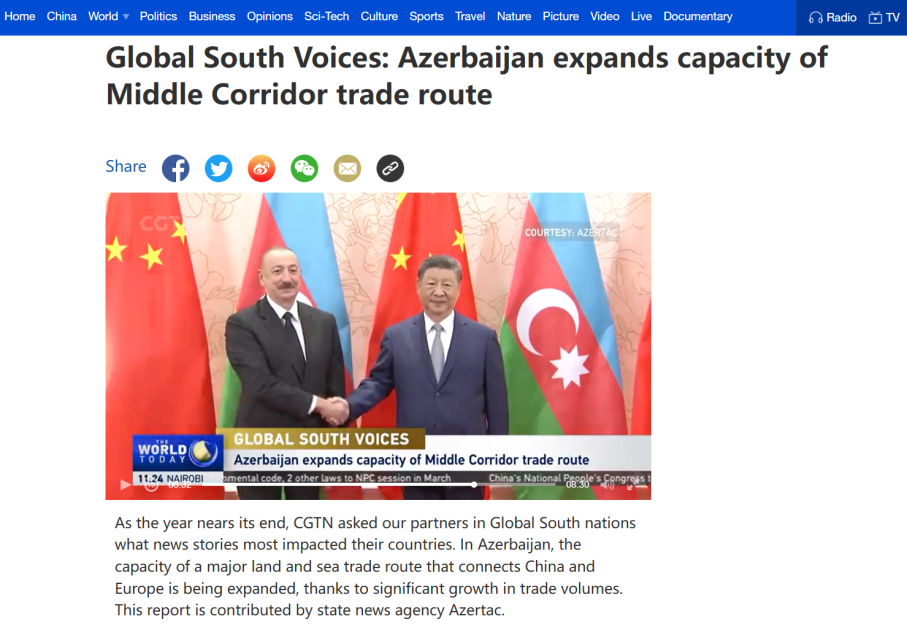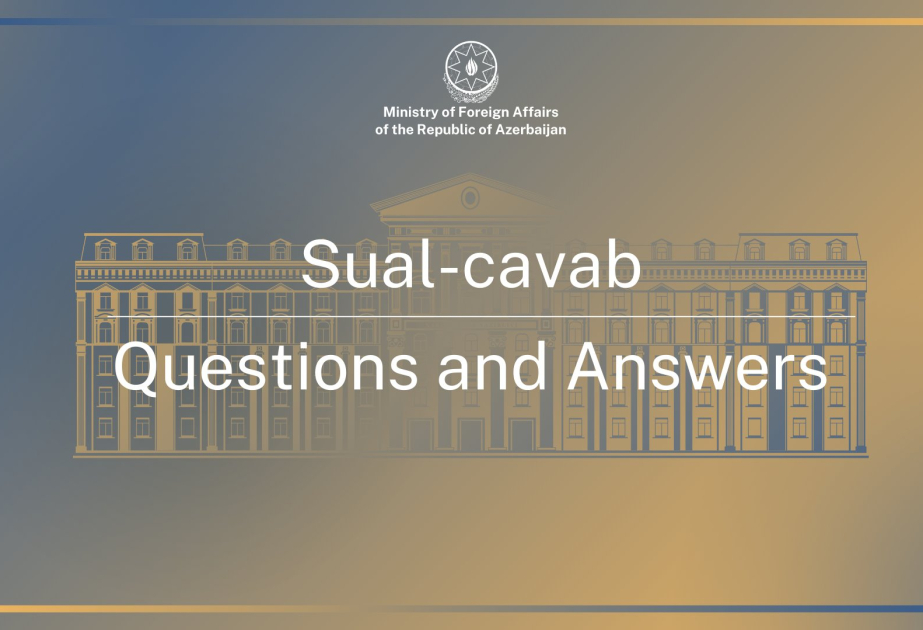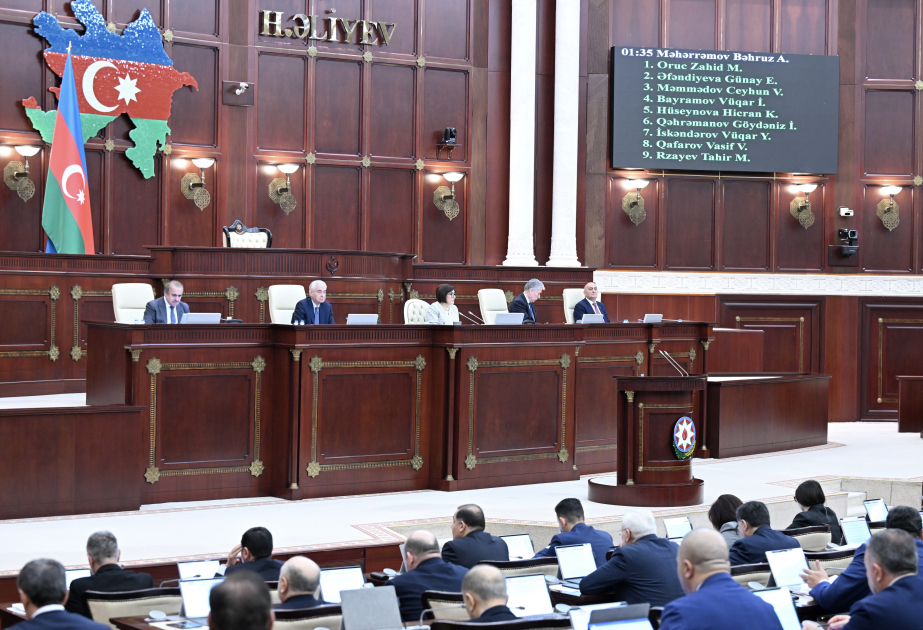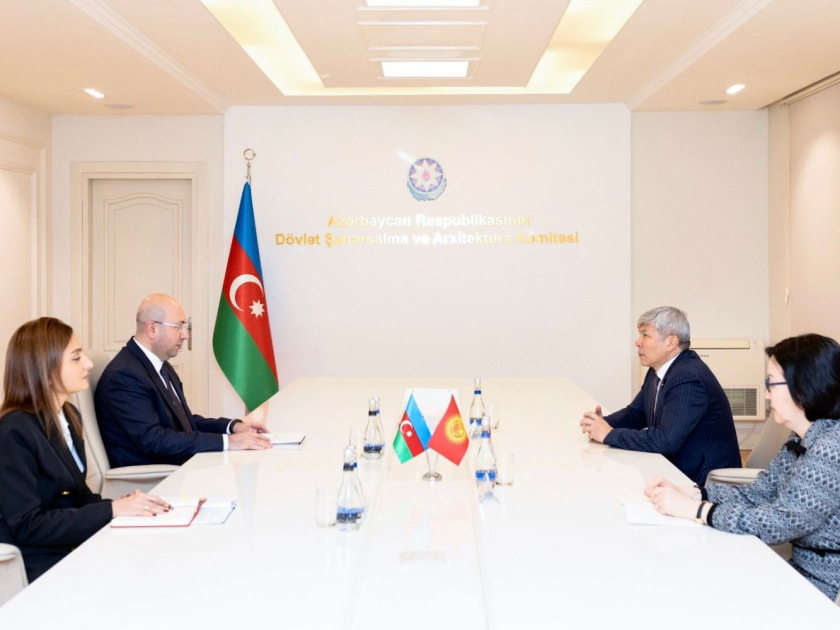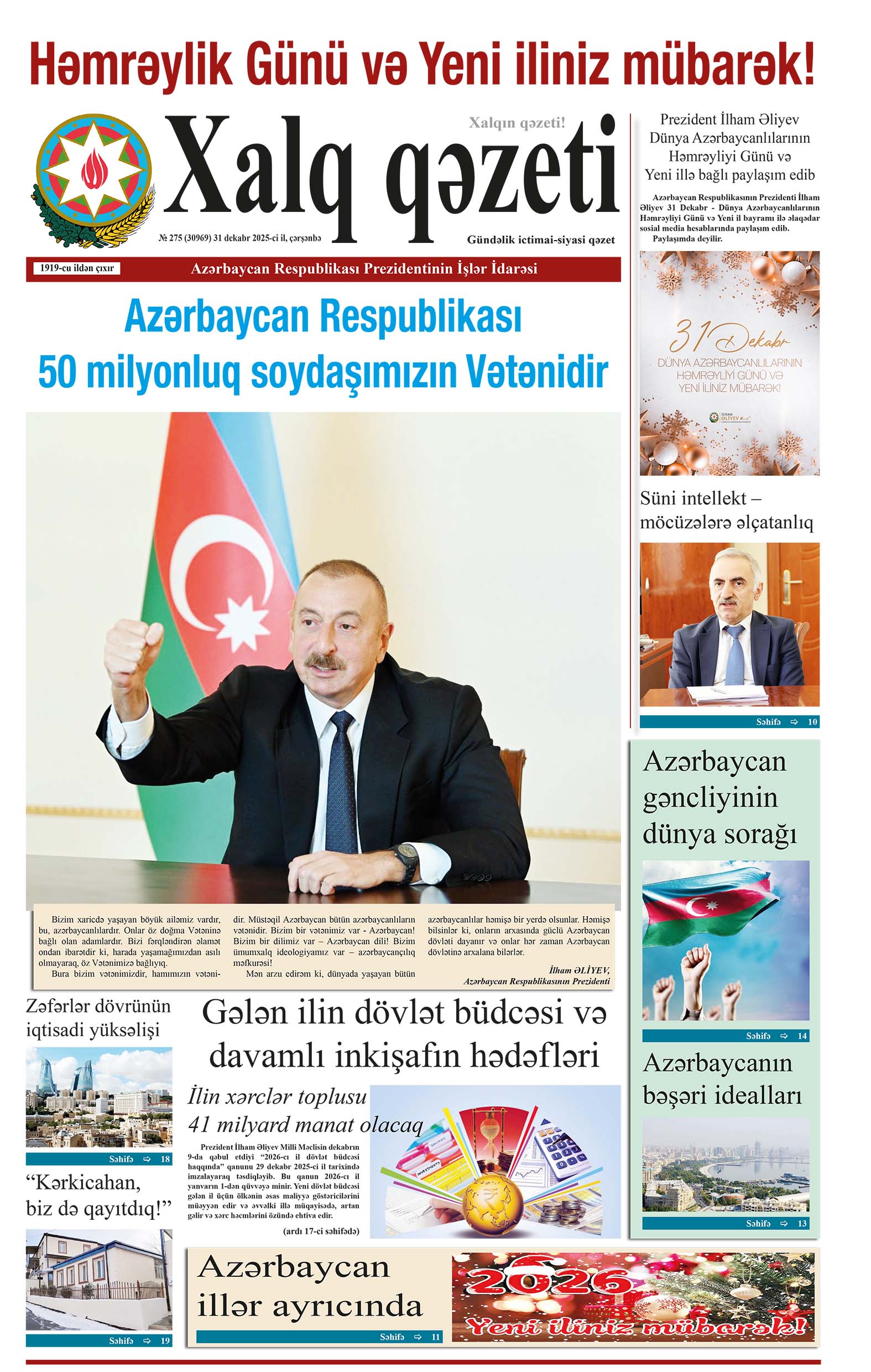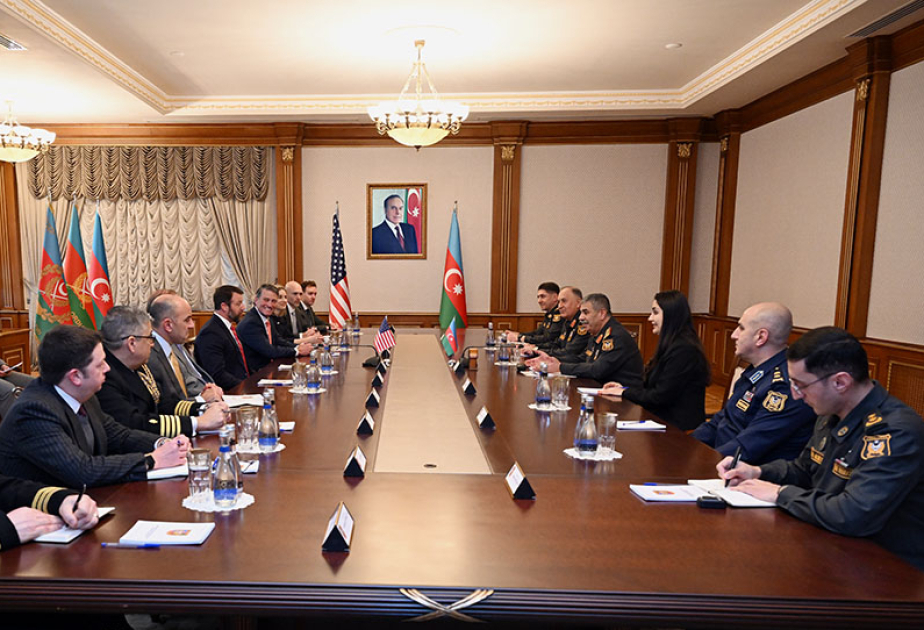How does Nikol Pashinyan distort reality?
Armenian Prime Minister Nikol Pashinyan spoke about the peace treaty with Azerbaijan. He again spoke on three principles. The positive point is that the Armenian Prime Minister is no longer talking about the return of Karabakh Armenians to the region, and international guarantees regarding their rights and security. The mentioned issue has left Armenia's peace agenda. But is it completely out?
According to N. Pashinyan, during the upcoming negotiations, Armenia will try to clarify whether Azerbaijan agrees to sign a peace treaty based on the three principles agreed upon through the mediation of the European Union. Apparently, the Prime Minister emphasizes the possibility that Baku will not agree with those principles. So, why is the Armenian Prime Minister cautious? Why is there any doubt that Azerbaijan will not sign the peace agreement? We believe that Nicole answers the questions with the ideas she expresses without realizing it.
N. Pashinyan states that the three principles he spoke about were agreed upon on May 14 and July 15 this year as a result of the tripartite meetings of the Chairman of the Council of the European Union Charles Michel, the President of Azerbaijan Ilham Aliyev and himself. The first of these principles is this: Armenia and Azerbaijan recognize each other's territorial integrity, recognizing that the territory of Armenia is 29,800 square kilometers, and the territory of Azerbaijan is 86,600 square kilometers.
At first glance, there is nothing in this saying. However, there is a different meaning when Nicol refers to the Alma-Ata Declaration of 1991 as the second principle and calls the document the basis of the delimitation process.
What strengthens the meaning are the ideas expressed by Pashinyan: "The Alma-Ata Declaration is the main reason why we say that the so-called titular territory of Armenia is 29,800 square kilometers. Because the Republic of Armenia was created with the independence of the Armenian SSR. In other words, the Republic of Armenia was established on the territory of the Armenian SSR. According to the Alma-Ata Declaration, the 12 republics that signed it, including Armenia and Azerbaijan, noted that they recognize each other's territorial integrity, inviolability of borders and sovereignty.
N. Pashinyan also states that the maps of the General Staff of the Armed Forces of the Soviet Union in 1974-1990 should be used in the delimitation process. This is related to the further development of the principle of territorial integrity and sovereignty. So, the prime minister has, as they say, key words - the creation of the USSR, the entry of Armenia into the USSR, the collapse of the USSR and maps of the years 1974-1990. The question is: If the Alma-Ata Declaration is, in a way, dogma, why should the maps of 1974-1990 be used as a basis? After all, in principle, the document should put everything in its place. Hence, the declaration does not have extraordinary priority.
***
Consider that the Alma-Ata Declaration does not emphasize that the territory of Armenia is 29,800 square kilometers. It does not reflect the fact that the territory of Azerbaijan is 86,600 square kilometers. The document generally talks about mutual recognition of territorial integrity and sovereignty. That is, which territory will be recognized is not certain. This means that there is no logic in the Armenian Prime Minister's reliance on the Alma-Ata Declaration when talking about numbers. But there are other aspects that prove Nicole's irrationality.
N. Pashinyan touches on an interesting point without realizing it. In his opinion, if the main principle in the determination of territories is the Alma-Ata Declaration, and if the document is based on the retention of what the allied republics had when they joined the USSR even after the fall of the Soviet Union, then what are the maps of 1974-1990 for? If there is a reference to the Alma-Ata Declaration, simple logic dictates that the map of accession to the USSR be considered. Because the declaration is a document confirming the separation from the union. That is, joining it should be considered as the main issue, just like leaving the USSR. It is not taken into account, and Pashinyan creates the impression that the territory of Armenia when it entered the USSR was 29,800 square kilometers.
If the Alma-Ata Declaration is not specific about the area of the territories of the republics and there is a reference to a document that is not specific, then shouldn't Azerbaijan stand on the territories it had when it joined the USSR? It should stop, and if it will stop, then the impression created by the Armenian Prime Minister is far from reality. In the sense that Armenia did not join the USSR with 29,800 square kilometers. Here, let's talk about the road that connects other areas of Azerbaijan with Nakhchivan. That road was the territory of Azerbaijan in 1923, and Megri district was located there. That district, together with the city center, was donated to Armenia in 1929 by Levon Mirzoyan, the First Secretary of the Central Committee of the Communist Party of Azerbaijan. Yes, Megri, whose former name was "Miğri", was the only corridor connecting Azerbaijan with Nakhchivan. Until 1974, the illegal transfer of the area to Armenia was not included in the maps. Therefore, when it comes to clarifying the borders, Nicole does not look before that year, but later. More precisely, to the maps of the later period.
***
The third principle based on Pashinyan is the opening of regional communications, based on the principle of reciprocity and equality, respect for the jurisdiction and sovereignty of countries. In other words, the Armenian Prime Minister wants to say that the logic of "easy way from Azerbaijan to Azerbaijan" of the Azerbaijani side regarding Nakhchivan is invalid.
Thus, we emphasized that N. Pashinyan's reasoning based on the Alma-Ata Declaration is irrelevant. Moreover, he has distorted history. There is one more question: why should Armenia leave the USSR with the loss of additional territory, Azerbaijan? In any case, it is clear that L. Mirzoyan's territorial dispute took place six years after the establishment of the Soviet Union. At present, the request of the Azerbaijani state not to apply any customs-crossing and border control on the road to Nakhchivan also stems from this. Therefore, President Ilham Aliyev's emphasis on an easy road to Nakhchivan is a legitimate right of Azerbaijan, and most importantly, divine justice.
The head of our state also drew attention to the fact that there is no threat to the territorial integrity and sovereignty of Armenia, nor any territorial claim by our country. Pashinyan, exaggerating the issue, actually reveals that Azerbaijan does not agree with the logic of an easy road to Nakhchivan. Then it doesn't matter which document he takes as a basis. Because Nicole is a frivolous person who took her signature for granted. We are talking about the tripartite statement of the leaders of Azerbaijan, Russia and Armenia dated November 10, 2020. Let's take into account that the ninth paragraph of the statement defines Yerevan's responsibility regarding the road to Nakhchivan. In such a case, questions arise: Why should the maps of 1974-1990 be used as a basis in the delimitation process? Just because they are the latest maps? After all, in principle, Pashinyan was the last person he did not care about at the moment.
Yes, Nicole's reference to the Alma-Ata Declaration, as well as the fact that he based the maps of 1974-1990 on the delimitation of Azerbaijan-Armenia borders, is against Azerbaijan's desire for an easy road to Nakhchivan. Considering the existence of Yerevan's determination to use all means to oppose Baku, who can guarantee that the Alma-Ata Declaration will not become a tool for this? So, how can the document be used against our country?
Let's remember that the Alma-Ata Declaration was signed on December 21, 1991. On December 10 of that year, a referendum was held in Karabakh, which Azerbaijanis boycotted and only Armenians participated in. According to the result of the referendum, the decision of the region's separation from Azerbaijan and its "independence" was made. Prior to that, on November 26, 1991, the Nagorno-Karabakh Autonomous Province administrative territorial unit was abolished by the law of the Supreme Soviet of the Republic of Azerbaijan. According to that law, the Decree of the Central Executive Committee of Azerbaijan dated July 7, 1923 "On the establishment of the Nagorno-Karabakh Autonomous Province" and the Law of the Azerbaijan SSR dated June 16, 1981 "On the Nagorno-Karabakh Autonomous Province" were considered invalid. Is there a guarantee that if Azerbaijan, in accordance with the Alma-Ata Declaration, recognizes Armenia's territorial integrity and sovereignty, Yerevan will not continue its Karabakh adventure? For example, the Armenian leadership can say that the "referendum" took place before the Alma-Ata Declaration, and the declaration envisages Karabakh as a separate independent subject. After all, there are still those who call the Karabakh war the Karabakh-Azerbaijani war in Armenia. The same Pashinyan used a stupid expression like "Karabakh has an elected government" from the local anti-terrorist measures held on September 19. After declaring in Prague and Brussels that he recognizes the territorial integrity of Azerbaijan, including Karabakh. Approximately such a picture was formed: Armenia recognizes Karabakh as Azerbaijan, the remaining issues are between Karabakh and Azerbaijan.
Therefore, it cannot be limited to the recognition of the territorial integrity of Azerbaijan by Armenia. Because the current issue is also protecting the tendency to be disputed according to the Alma-Ata Declaration. We come to the conclusion that Armenia should officially declare the absence of any claims against Azerbaijan regarding Karabakh. The current situation should be reflected in the peace agreement. And therefore, further manipulation of Armenia based on the Alma-Ata Declaration should not be allowed. That is why the official Baku, quite rightly, insists that the delimitation of the borders should be done in a real way. We have already talked about a certain part of what the real foundations are. Of course, there are issues that we have not yet addressed.
A. JAHANGIROGLU
XQ


.jpg)
